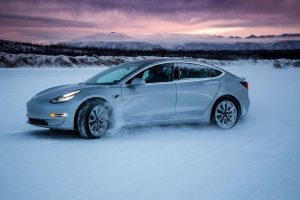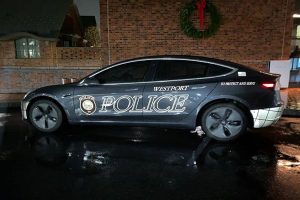- 🚗 A Ford Mustang Mach-E driver is facing charges for a deadly crash using the BlueCruise system, resulting in two fatalities.
- 🚨 The crash occurred on Interstate 95 at 3 a.m., involving a disabled Toyota Prius and a good Samaritan who stopped to help.
- 📉 The Ford Mustang Mach-E reportedly had its BlueCruise and Adaptive Cruise Control systems active at the time of the crash.
- ⚖️ The driver is facing nine charges, including homicide while under the influence, involuntary manslaughter, and reckless driving.
- 🛡️ Ford is cooperating with investigations and emphasizes that BlueCruise is not a fully autonomous system.
In a tragic incident earlier this year, a Ford Mustang Mach-E driver from Pennsylvania faces serious charges following a fatal crash involving the use of the vehicle’s BlueCruise driver-assist system. This blog post delves into the circumstances surrounding the event, the broader implications of driver-assist technologies, and the responsibilities of manufacturers and drivers in ensuring road safety.
Understanding the Incident
A Tragic Event Unfolds
In the early hours of March 3rd, a tragic accident occurred on U.S. Interstate 95, claiming two lives. A Toyota Prius, disabled on the highway shoulder, was being attended to by a helpful passerby when a Ford Mustang Mach-E, reportedly operating under the BlueCruise hands-free system, collided with the parked vehicles. This incident raises crucial questions about the reliability of driver-assist systems and the accountability of their users.
Charges Against the Driver
The Mach-E driver, Dimple Patel, now faces multiple charges, including:
- Homicide by vehicle while driving under the influence
- Involuntary manslaughter
- Reckless and careless driving
- Prohibited text-based communications
These charges highlight the potential legal ramifications for drivers relying too heavily on technology.
The Role of BlueCruise and Driver-Assist Systems
What is BlueCruise?
BlueCruise is Ford’s hands-free driving assistance feature designed to offer a partially automated driving experience in designated areas known as “Blue Zones.” While promising enhanced convenience, Ford emphasizes that it is not meant to function as a fully autonomous system. This critical distinction aims to remind users that active human oversight is paramount.
Technology’s Place in Modern Vehicles
Driver-assist systems like BlueCruise are part of a broader technological trend in the automotive industry aimed at improving safety and driving efficiency. They include features such as:
- Adaptive Cruise Control: Maintains a safe distance from vehicles ahead.
- Lane-Keeping Assistance: Helps the vehicle stay centered within a lane.
- Automatic Emergency Braking: Detects potential collisions and applies brakes automatically.
Despite these features being technologically advanced, they are not infallible and should be viewed as supplementary aids rather than replacements for human vigilance.
Broader Implications for Road Safety
Impact on Driving Behavior
The advent of driver-assist systems has led to a significant shift in driving behavior. Some critical considerations include:
- The Illusion of Safety: Drivers might overestimate the capabilities of assistive technologies and become complacent.
- Underestimating Human Role: Despite automation, human judgment remains critical for making nuanced driving decisions.
Legal Landscape and Accountability
The increasing integration of autonomous features has led to evolving legal discourse. Key legal considerations include:
- Liability Issues: Determining accountability in accidents involving autonomous systems remains complex.
- Regulatory Frameworks: Stricter regulations might be necessary to define the boundaries and responsibilities associated with driver-assist technologies.
Moving Forward: A Call for Shared Responsibility
In light of this tragic event, it is imperative for both technology developers and users to adopt a mindset of shared responsibility:
- For Manufacturers: Ensuring comprehensive driver education and advanced safety features that warn drivers against over-reliance on automation.
- For Drivers: Remaining attentive, understanding the technology’s limitations, and adhering to traditional driving precautions to ensure safety on the road.
Conclusion
The tragic accident involving the Ford Mustang Mach-E and its BlueCruise system underscores the urgent need for a balanced approach to integrating driver-assist systems. As these technologies continue to evolve, it is crucial to maintain an emphasis on responsible usage and continuous education for drivers, ensuring that the promises of enhanced safety and convenience do not come at the cost of human life.





